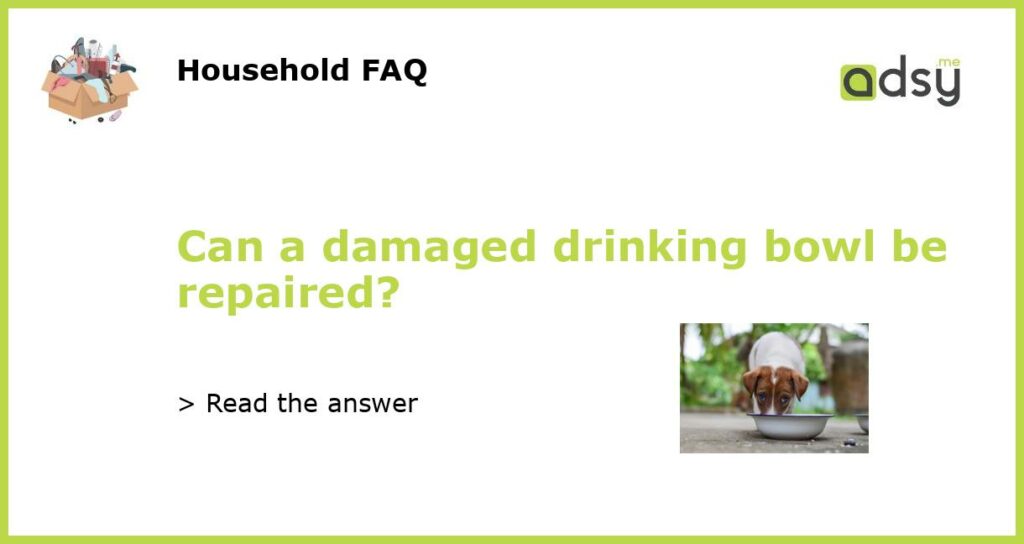The Importance of Drinking Bowls for Livestock
Drinking bowls are essential for livestock as they provide access to clean and fresh water, which is crucial for their health and wellbeing. A damaged drinking bowl can cause various problems, such as leaks, which can lead to water wastage, and jagged edges that can harm the animal’s mouth. Therefore, it is essential to ensure that drinking bowls are regularly inspected and maintained to prevent any damage.
Assessing the Damage
Before repairing a damaged drinking bowl, it is essential to assess the extent of the damage. If the damage is minimal, such as a small chip, it may be possible to repair the bowl. However, if the damage is severe, such as a large crack or hole, it may be more cost-effective to replace the drinking bowl.
Repairing a Damaged Drinking Bowl
If the damage is minor, the first step in repairing a drinking bowl is to clean the damaged area thoroughly. Next, apply a food-grade epoxy, such as J-B Weld Food-Safe Epoxy Putty, to the damaged area. Follow the manufacturer’s instructions, and allow the epoxy to dry completely. Once the epoxy is dry, sand the surface until it is smooth and free of any rough edges.
Replacement Options
If the drinking bowl is severely damaged, it may be more practical to replace it. Several options are available, such as plastic, ceramic, or stainless steel drinking bowls. Plastic drinking bowls are lightweight and budget-friendly but can be easily damaged by livestock. Ceramic drinking bowls are durable and easy to clean but can be heavy and breakable. Stainless steel drinking bowls are the most durable and hygienic but can be expensive.
Preventing Damage to Drinking Bowls
Prevention is always better than cure, and this also applies to drinking bowls. To prevent damage to the drinking bowl, it is essential to ensure that it is installed correctly and securely. It is also essential to ensure that the drinking bowl is cleaned regularly to prevent any build-up of dirt or bacteria, which can damage the surface over time. Additionally, it is essential to protect the drinking bowl from extreme temperatures, such as freezing or boiling, to prevent the bowl from cracking or warping.






